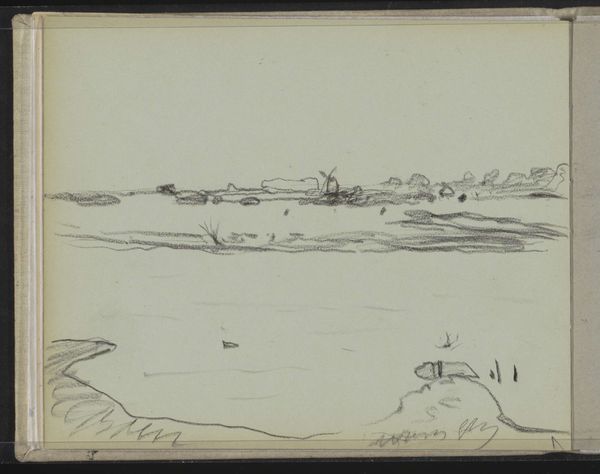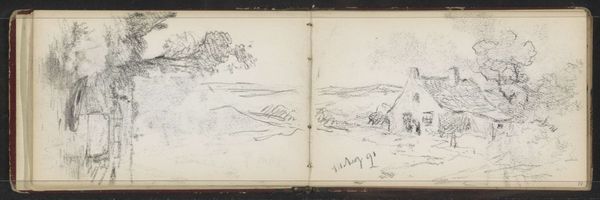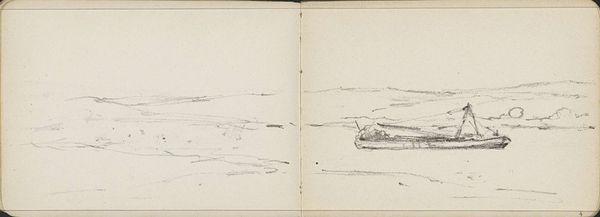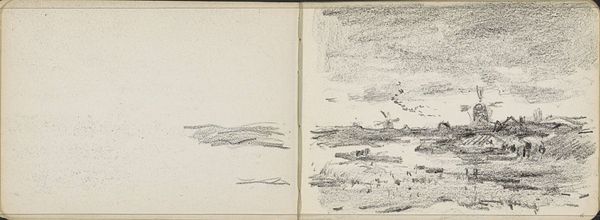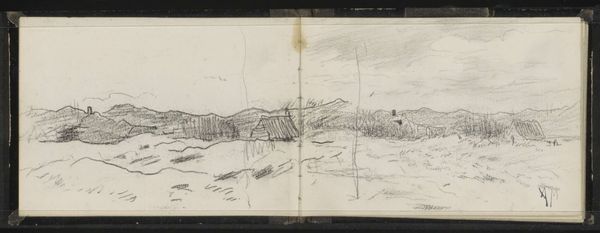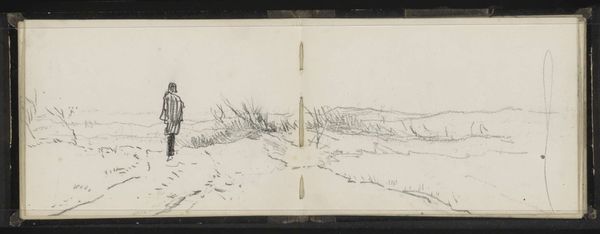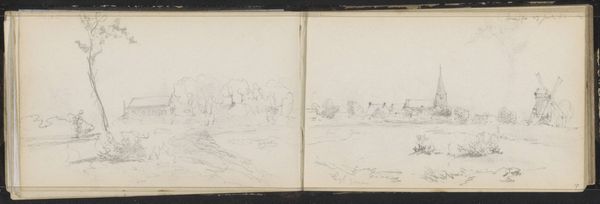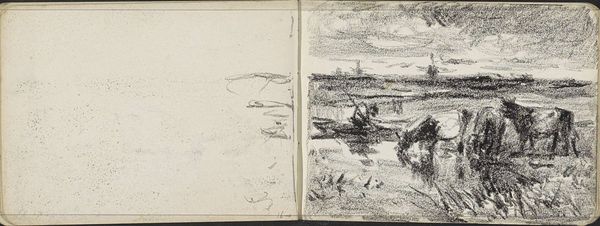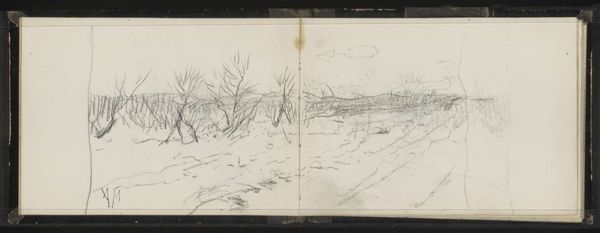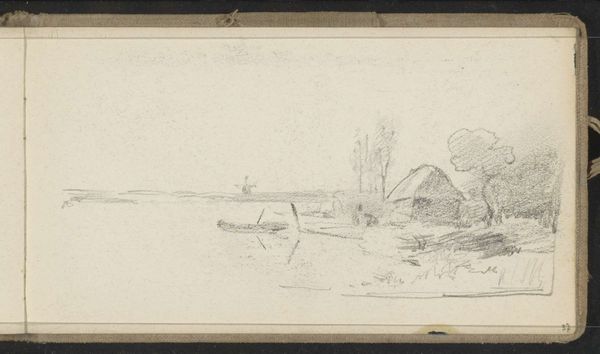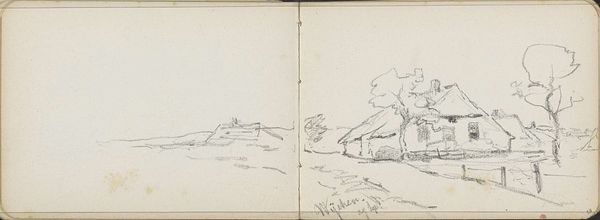
drawing, pencil
#
drawing
#
pen sketch
#
sketch book
#
incomplete sketchy
#
landscape
#
personal sketchbook
#
sketchwork
#
ink drawing experimentation
#
pen-ink sketch
#
pencil
#
pen work
#
sketchbook drawing
#
sketchbook art
#
realism
Dimensions: height 101 mm, width 157 mm
Copyright: Rijks Museum: Open Domain
Editor: This is "Landschap met vee," or "Landscape with Cattle," created around 1891-1892 by Willem Cornelis Rip. It’s a pencil and ink drawing spread across two pages of a sketchbook. It feels… unfinished, raw. What do you see in it? Curator: I see the artist grappling with the materials, testing the limits of pen and pencil. The quick, sketchy lines aren't just depicting a landscape, they're revealing the very act of seeing and recording. Consider the paper itself - a cheap sketchbook, a tool of practice, not necessarily intended for public display. It hints at the everyday labor and economic conditions that underpin artistic production. Editor: So you're saying the *process* of creation is as important as the image itself? The sketchbook becomes evidence. Curator: Precisely. Think about the labor involved - sourcing the materials, the physical act of drawing. Was the artist working outdoors, exposed to the elements? Was this a commission, or personal exploration? These material conditions shape the artwork. And how does the act of sketching democratize art, moving it outside formal studio settings? Editor: That’s really interesting! I was focused on the landscape, the cattle. But now I see the labor and economic reality behind its creation. Curator: Consider, too, the social context. Late 19th-century Holland was undergoing rapid industrialization. How might Rip's return to the landscape – and his focus on materials at hand – be read as a commentary on or retreat from this industrial transformation? What are the implied consumption practices in this image? Editor: It gives the work a totally different dimension. Thank you. It feels like a deeper look into the role of the artist and the artwork’s social and material context. Curator: Indeed. By focusing on materials and production, we understand art not just as representation, but as a product of specific historical and economic forces. It enriches our viewing experience.
Comments
No comments
Be the first to comment and join the conversation on the ultimate creative platform.
